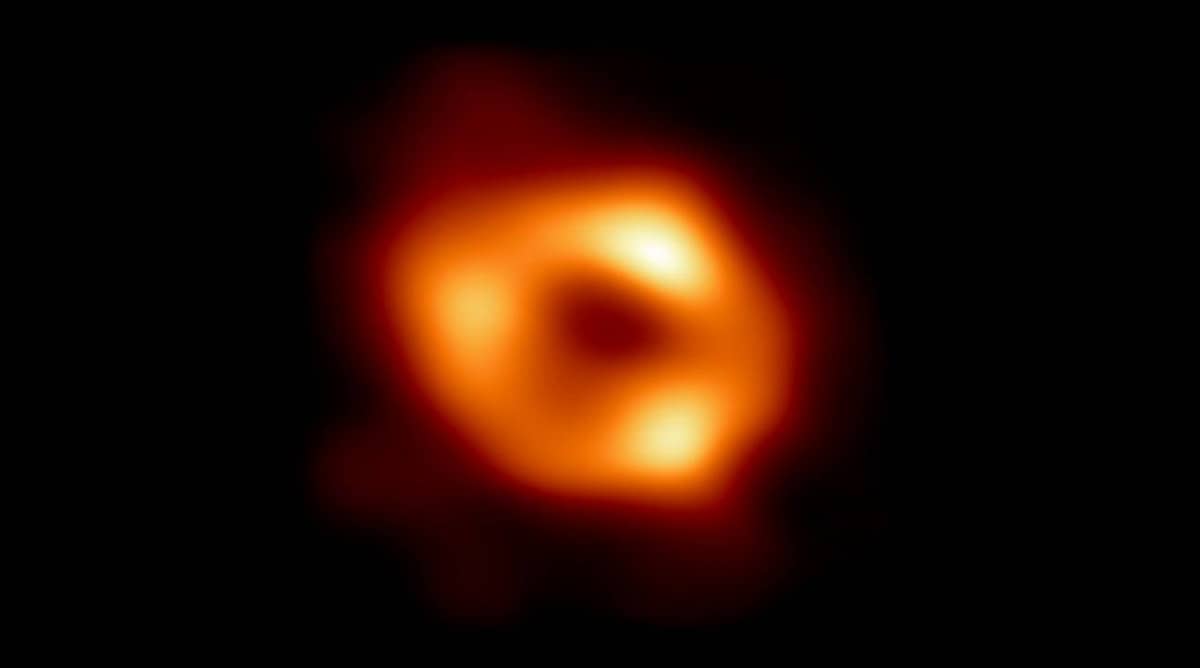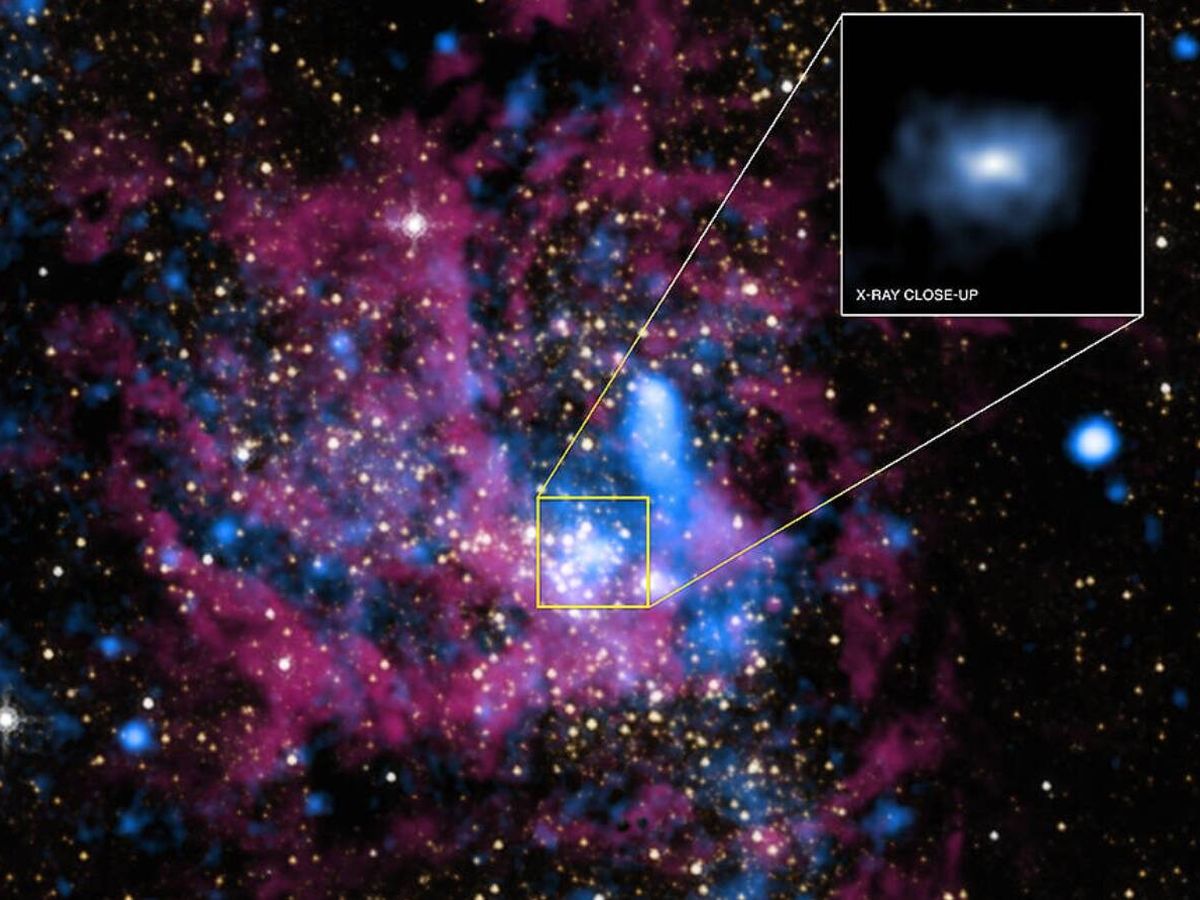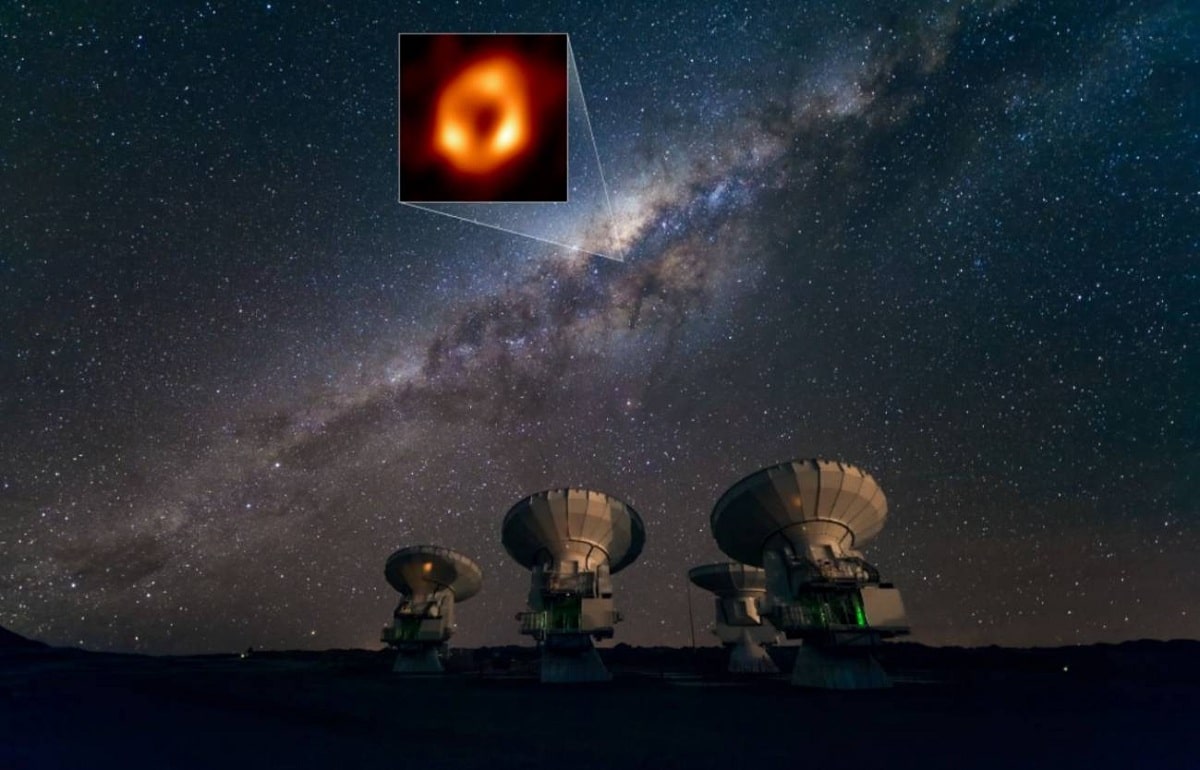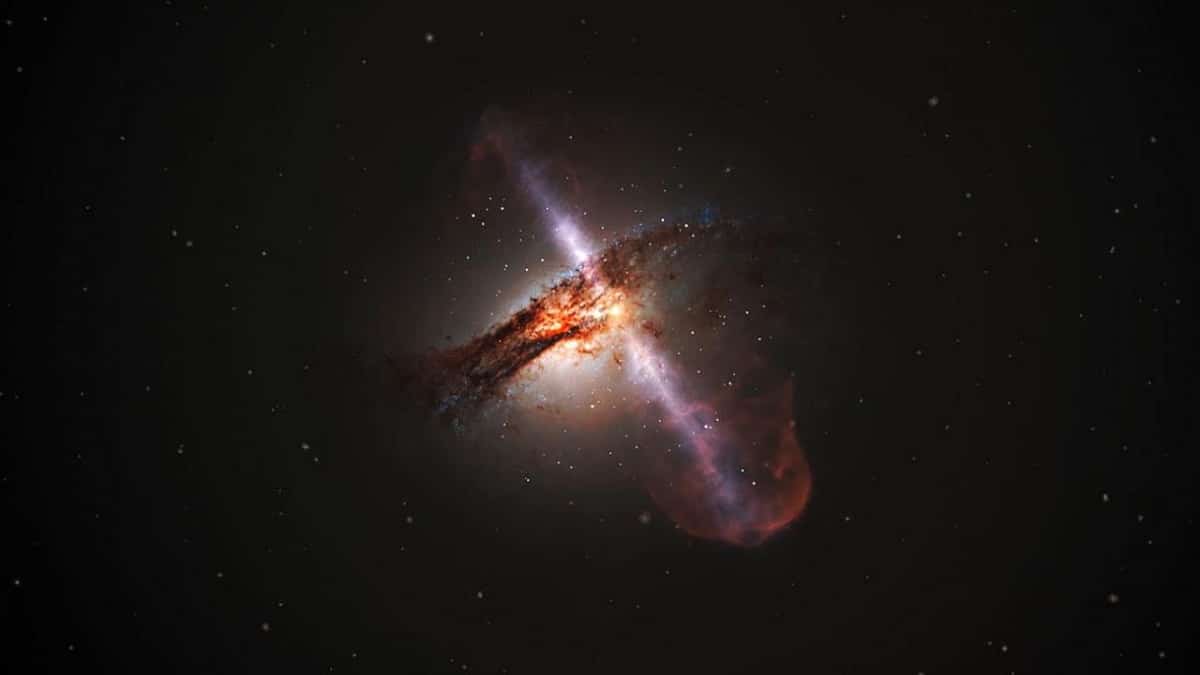
Three years ago, the scientific community of the Event Horizon Telescope (EHT) surprised the world with the first photograph of a black hole captured in the neighboring galaxy M87. Now, the same team has for the first time shown direct visual evidence of with the first image of the black hole in our galaxy, using observations from a global network of radio telescopes.
In this article we are going to tell you how an image of the black hole in our galaxy has been obtained and what repercussions it has.
Capture an image of the black hole in our galaxy

This is Sagittarius A*, a highly variable radiation source that is constantly changing. Scientists have been using algorithms for years to reconstruct its evolution over time as if it were a "movie", but they have now succeeded and rendered their still images.
In addition to a set of papers published in a special edition of The Astrophysical Journal Letters, the Event Horizon Telescope (EHT) Collaboration Team unveiled the milestone today at a series of simultaneous international press conferences around the world.
"This is the first image of Sagittarius A*, the supermassive black hole at the center of the Milky Way, which is 4 million times more massive than the Sun. We provide the first direct visual evidence of their existence," said Sara Issaoun, Harvard Astrophysicist A Center Research Fellow, speaking at the European Southern Observatory (ESO) headquarters in Munich, Germany.
The results provided overwhelming evidence that the object was a black hole and provided valuable clues about the workings of these giant stars, which are thought to lie at the center of most galaxies.
According to more than 300 scientists from the 80 centers involved in the discovery, the gigantic hole "weighs" about 4 million solar masses, in a region no larger than our solar system, 27.000 light years from our planet. From our perspective, it is the size of a donut on the moon in the sky.
first visual evidence

The image is a long-awaited look at the massive object at the center of our galaxy. Scientists have seen stars orbiting some very large, compact, invisible objects in the center of the Milky Way. This strongly suggests that the celestial body Sadge A* is a black hole.
Although we can't see the black hole itself because it's completely dark, the glowing gas surrounding it reveals a distinctive feature: a dark central region (called a shadow) surrounded by a bright ring structure. The new view captures light bent by the black hole's powerful gravity.
"We were surprised that the size of the ring matched the predictions of Einstein's general theory of relativity so well," said Geoffrey Bower, chief scientist of the EHT project at the Institute for Astronomy and Astrophysics, Academia Sinica, Taipei. "These unprecedented observations greatly improve our understanding of what is happening at the center of our galaxy and provide new insights into how giant black holes interact with their environment«.
Observing such a distant object would require an Earth-sized telescope, albeit virtually or equivalently, and that's what the EHT can achieve. It consists of eight radio telescopes located in Chile, the United States, Mexico, Spain and the South Pole. In the USA, operated by the European Southern Observatory (ESO) and other international partners in the Atacama desert in Chile, in Europe the Institute for Millimetric Radio Astronomy (IRAM) in Sierra Nevada (Granada) stands out.
The EHT observed Sagittarius A* for several consecutive nights, collecting data for hours, similar to using long exposures on a still camera. Among the radio telescopes that make up the EHT, the IRAM antenna of 30 meters long played a crucial role in the observations, allowing to obtain the first images.
Through a technique called very long reference interferometry (VLBI, which uses mathematical operations instead of lenses), the signals from all the radio telescopes have been combined and their data processed by algorithms and supercomputers to reconstruct the best image. possible.
Thalia Traianou, a researcher at the Andalusian Institute of Astrophysics (IAA-CSIC), adds: "The technology will allow us to obtain new images of black holes and even movies."
Two similar black holes

Regarding the image of the black hole in the galaxy M87 taken in 2019, scientists agree that the two black holes look very similar, even though the black hole in our galaxy it is more than 1000 times smaller and less massive than M87*, which is 55 million light-years away. The giant star has a mass of 6.500 billion suns and a diameter of 9.000 billion kilometers, which means that the solar system up to Neptune will enter it.
"We have two completely different types of galaxies and two very different masses of black holes, but near the edges of these black holes, they look surprisingly similar," said Sera Markoff, co-chair of the EHT Science Committee and professor of theoretical astrophysics at the University of Amsterdam. This tells us that general relativity governs these objects up close, and that any differences we see further away are due to differences in the matter surrounding the black hole. »
This is how Roberto Emparan, theoretical physicist and ICREA professor at the Institute of Cosmology of the University of Barcelona, explains it to SMC Spain: "At the moment, we can say that the similarity between the image of M87* from 2019 and the current image comes from a SgrA * which shows that, regardless of the size of the black hole, the environment closest to the black hole is very similar. Future observations will tell us more about the properties of the matter surrounding the black hole, and we may be able to tell whether the object is really what Einstein's theory predicted, or a more exotic 'imposter' or 'copycat'."
Gonzalo J. Olmo, professor of the Department of Theoretical Physics and IFIC of the Hybrid Center of the University of Valencia and the CSIC, and Diego Rubiera-García, Talent researcher of the Department of Theoretical Physics of the Complutense University of Madrid coincide. "Although this object is a thousand times larger than the objects observed today in the Milky Way, its similarity to our 'little' black hole shows the generality of the physics that describes these objects", they stress to SMC Spain.
However, today's results are much more difficult than M87*, although Sagittarius A* is closer. The team had to develop sophisticated new tools to explain the movement of gas around Sgr A*. While the M87* is a simpler and more stable lens, almost all images look the same, the Sgr A* is not.
"Gas near the black hole is moving at the same speed, almost as fast as light, near Sagittarius A* and M87*," explained EHT scientist Chi-kwan Chan of the Steward Observatory and Department of Astronomy and Data. at the University of Arizona, while gas takes days to weeks to orbit the larger M87*, the much smaller Sagittarius A* completes an orbit in minutes."
"This means that the brightness and pattern of the gas around Sagittarius A* is changing rapidly as the EHT cooperates to observe it: it's a bit like trying to get a clear picture of a puppy quickly chasing its tailHe continued.
The Sgr A* black hole image is an average of the different images the team extracted, finally revealing the giant star at the center of the Milky Way for the first time.
I hope that with this information you can learn more about the images captured of the black hole in our galaxy.